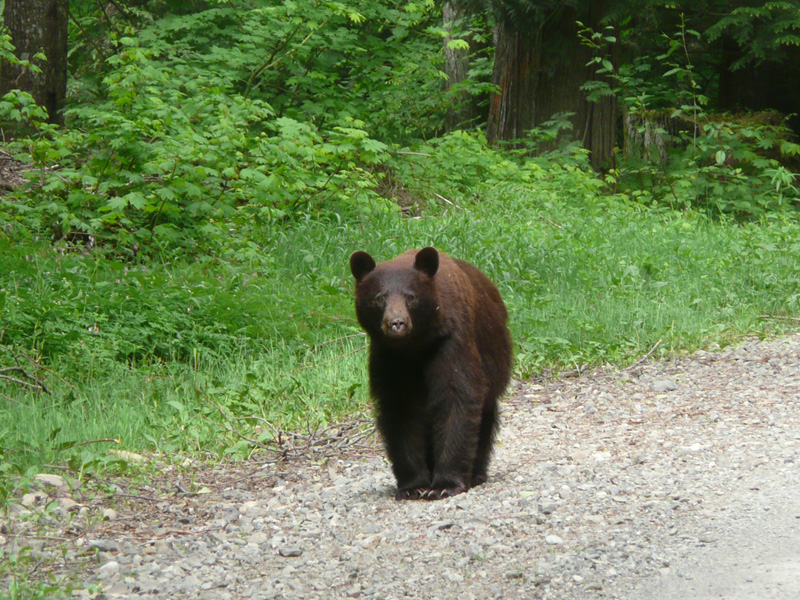
Commercial timber owners in Washington will be able to apply for black bear damage permits
Listen
(Runtime 1:00)
Read
Permits to hunt black bears in Washington will be available this spring for commercial timber owners, if they prove a bear damages their trees. The state Fish and Wildlife Commission voted 6-3 to approve this new permitting system.
The Commission paused the 2022 spring hunts amid outcry from animal rights groups. The hunts are allowed in Oregon and Idaho. This new rule would not reinstate Washington’s hunts.
Black bears strip bark from trees looking for food, often at smaller timber farms, and that can kill or severely damage trees, said Jim Brown, Conflict Section manager.
“They’re mom and pop operations. They are people who have their entire retirement portfolio based on a couple of parcels,” Brown said.
To get a permit, property owners will have to turn in pictures and GPS data of the damage.
Before this decision, commercial timber owners could get help if black bears damaged their trees through a couple routes: They could ask Washington’s Fish and Wildlife Director for a permit or they could pay a fee to federal Wildlife Services for help killing bears.
With this permitting system, department staff said they don’t expect more bears to be killed. Last year, the department director issued about 60 permits. Of those, around six bears were killed, staff said.
Commissioner Lorna Smith said there isn’t a way to know if the right bears are killed or whether anecdotal evidence of less damage after bears are killed is accurate. She said she also worried that simply killing bears isn’t addressing the problem.
“It seems to me this is more of a social solution than actually knowing if it works,” Smith said.
Fenner Yarborough, the Landowner Services Division manager, said the department can’t be 100% sure the system is deterring damage to trees.
This situation has come about because of the way forests were historically managed for timber harvest, Brown said. The problem of bears stripping timber has happened since the late 1940s, he said, when the timber industry changed to forests with the same type and age of trees.
In addition, other forestry practices contribute to the issue, Brown said, like the use of herbicides, maximizing production for timber and getting rid of other plants that bears eat, such as berries, shrubs and grasses.
“I think removing bears will always be somewhat controversial but I expect that bear removals will always be part of the calculus moving forward until we find some other tool that’s perhaps more effective, which currently we don’t have,” Brown said.
Other commissioners said while this isn’t a perfect system, there are no perfect choices.
“We are in a situation of having not a perfect choice but maybe a choice that’s better and provides transparency and an opportunity to continue monitoring it over time,” Anderson said of the permitting system.
The Fish and Wildlife Commission also asked for a review of the program at the end of 2024.
“As we go into the future with wildlife management, I think we’ve got to be more creative than this. We’ve got to be more thoughtful than this,” said Commissioner Tim Ragen, who voted no on the permitting process. “Otherwise, it’s something we want to push to the side and ignore. That is not an adequate way to manage wildlife.”















